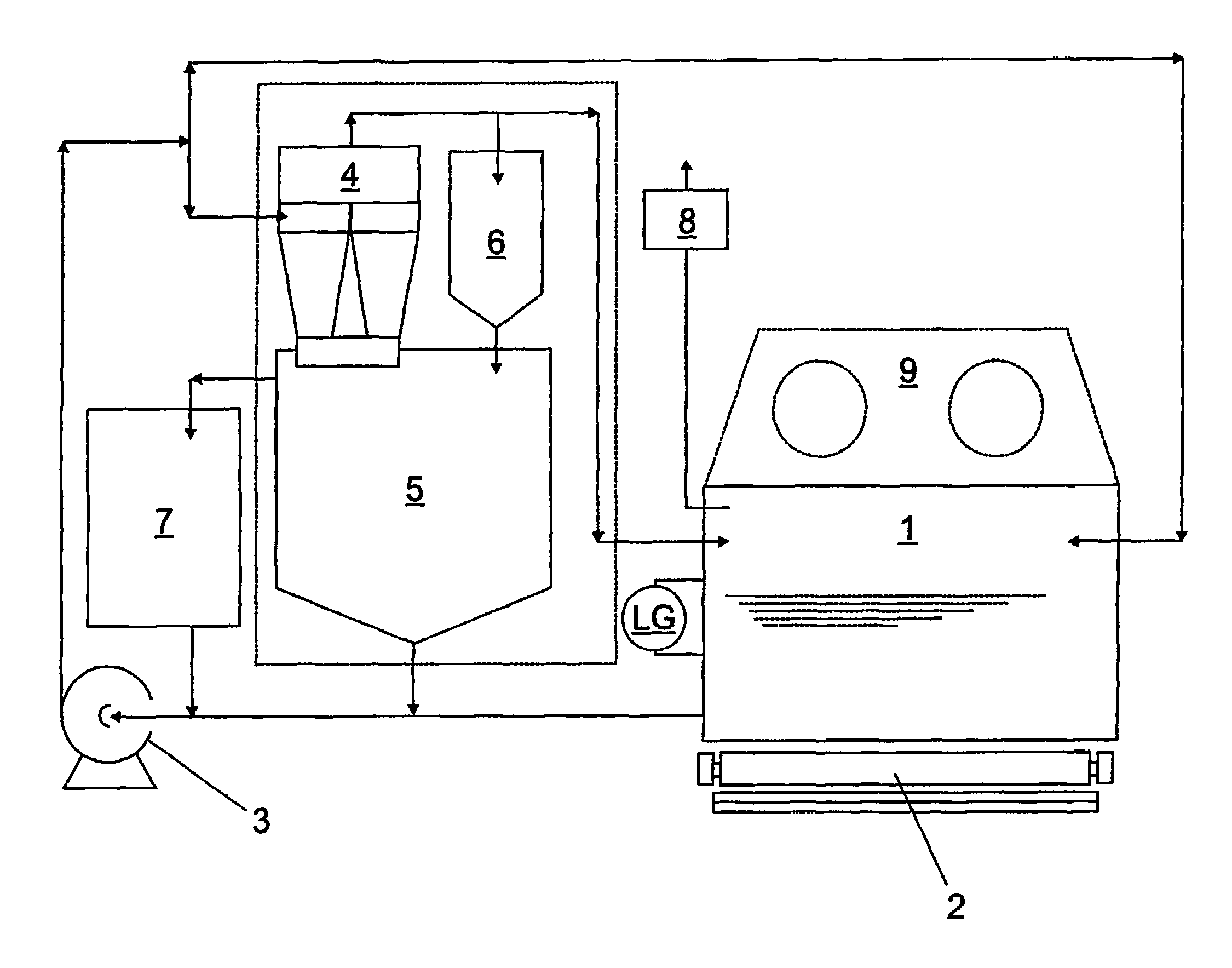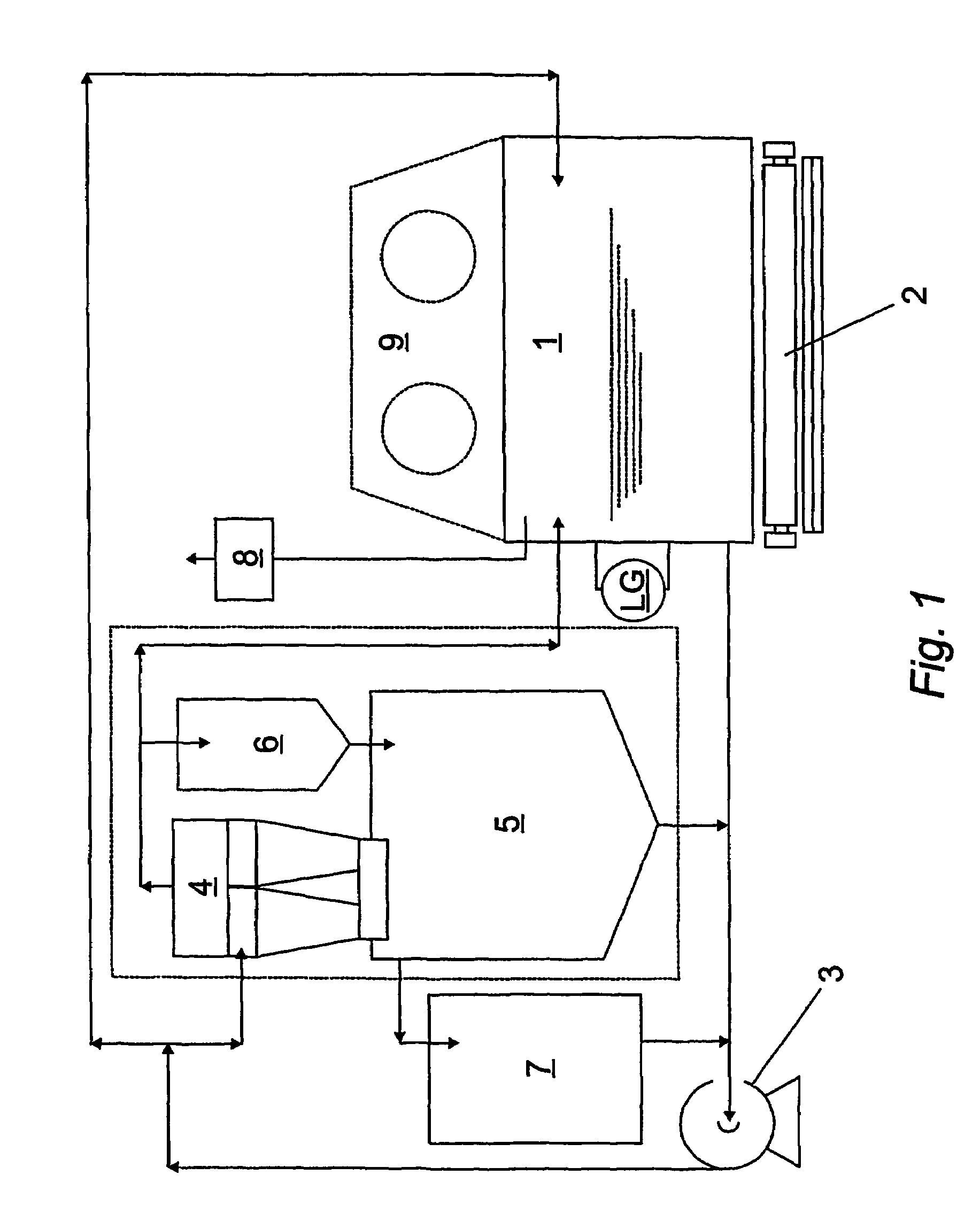Apparatus and method for treatment of chemical and biological hazards
a technology of apparatus and chemical and biological hazards, applied in the direction of hydrocarbon preparation, water/sludge/sewage treatment, lavatory sanitory, etc., can solve the problems of chemical and biological agents, such as those used as weapon materials, presenting special problems in terms of transmission and destruction, and significant difficulties, so as to facilitate a suitable reaction interface, low viscosity, and reliable and effective treatment
- Summary
- Abstract
- Description
- Claims
- Application Information
AI Technical Summary
Benefits of technology
Problems solved by technology
Method used
Image
Examples
second embodiment
[0046]A second embodiment is shown schematically in FIG. 2. This apparatus is designed for use in hospitals or larger clinics with high throughput of surgical instruments for decontamination. It is designed for operation by dedicated staff with training in the decontamination of surgical instruments and equipment.
[0047]The apparatus comprises a treatment chamber (1) having decontamination trays (10) an ultraviolet light source (2) and a medium distribution system (11). Catalyst from the catalyst hopper (6) and / or a catalyst recovery system (4) are introduced into a holding tank (5). The contaminated equipment or product is placed in the decontamination trays (10) and the trays (10) are lowered into the treatment chamber (1). The lid is closed and interlocks engaged before the process is allowed to start. In order to maintain the catalyst in suspension within the medium, the medium is circulated by means of a circulation pump (3) and a medium distribution system (11) having a plurali...
third embodiment
[0049]The third embodiment, shown schematically in FIG. 3 with details of the treatment chamber arrangement shown in FIGS. 4 and 5, is designed for either high or low volume destruction of high level bio-hazards such as chemical or biological agent materials, prion contaminated material or the like (and may be adapted to handle solid, liquid or gas phase hazardous materials). It is envisaged that such a system would be operated in a restricted area by dedicated and suitably trained staff.
[0050]The apparatus comprises a series treatment chambers (1) the number and configuration of which may be adapted depending upon the nature and quantity of material to be treated. The target material in a suitable pre-prepared state is introduced from a target material hopper (13) under control of metering means (14) into a mixing vessel (15). The carrier medium is fed in to the mixing vessel (15) from the circulation header tank (12) by the circulation pump (3) and catalyst is added from a catalys...
PUM
| Property | Measurement | Unit |
|---|---|---|
| Wavelength | aaaaa | aaaaa |
| Wavelength | aaaaa | aaaaa |
Abstract
Description
Claims
Application Information
 Login to View More
Login to View More - R&D
- Intellectual Property
- Life Sciences
- Materials
- Tech Scout
- Unparalleled Data Quality
- Higher Quality Content
- 60% Fewer Hallucinations
Browse by: Latest US Patents, China's latest patents, Technical Efficacy Thesaurus, Application Domain, Technology Topic, Popular Technical Reports.
© 2025 PatSnap. All rights reserved.Legal|Privacy policy|Modern Slavery Act Transparency Statement|Sitemap|About US| Contact US: help@patsnap.com



